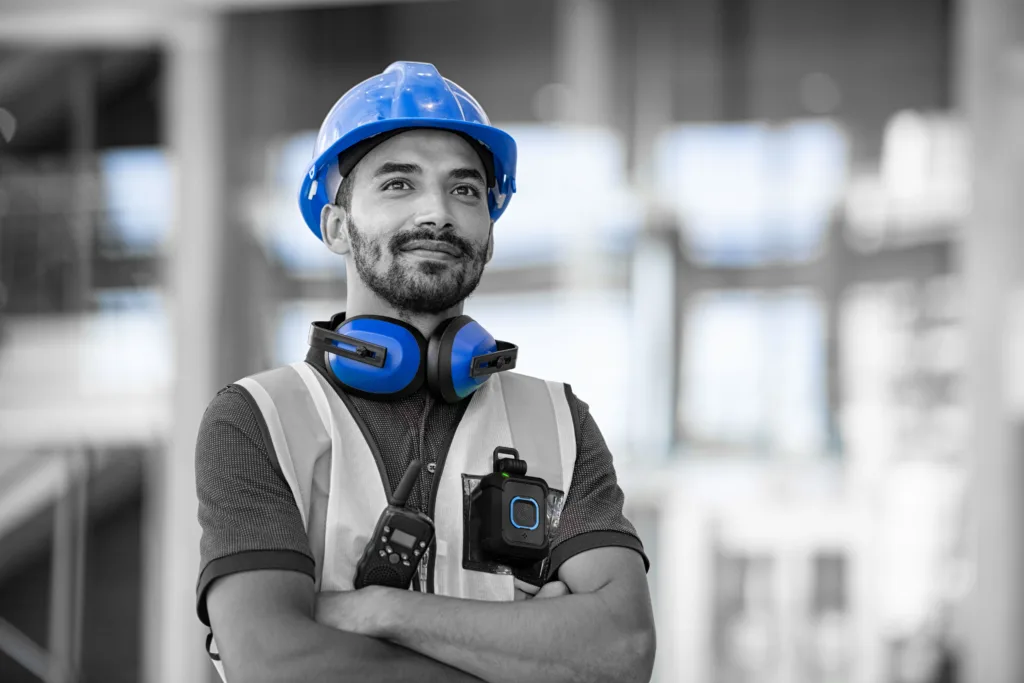If you’ve come across this article, chances are you have a keen interest in adding digital tools to take your industrial safety to the next level: enhancing the safety of your plant, equipping your workers, having organized data, and, in general, achieving better safety management fit for the 21st century.
However, as you explore the various products and solutions offered by Drixit, you might find it challenging to visualize how the implementation would work in your workplace. Let’s walk you through it!
What do we do.
Drixit digitizes safety processes in industrial companies, providing technology that enables workers to perform their tasks more safely. It also offers leaders in safety valuable information to enhance management and make proactive, data-driven safety decisions.
The safety digitization involves incorporating various technological devices into the operation, not only protecting workers on the plant but also collecting necessary information for safety leaders. Let’s delve into the different products and solutions available.
Available safety solutions.
When it comes to digitizing safety in your industrial plant, the choice of products depends on your operation and needs. Before summarizing each one briefly, it’s important to note that the Drixit platform and Drixit Tags are always included. The platform receives, organizes, and presents information from the devices to safety leaders, and safety rules are configured in it.
Now, let’s briefly go over our products:
- Drixit Platform: Digitizes safety golden rules, configuring which safety events will trigger personalized alerts and who will receive them. It processes and presents real-time and historical operation information to understand what happened, why, and when, and proactively improve safety protocols.
- Drixit Tag: A portable device designed to protect industrial workers in high-risk environments. It has a comfortable, ergonomic design, operates in demanding conditions (water and dust-resistant, certified for explosive atmospheres), a long-lasting internal battery, a panic button, and a light system for user alerts.
- Drixit Spotter: A collision detection and prevention system specifically designed for industrial environments. It combines advanced technology, sensors, and communication devices to ensure a safe working environment.
- Drixit Mobile App: An application reinforcing safety protocols and communication, designed for industry workers who can use their phones (administrative and logistics personnel). It offers functionalities similar to Drixit Tag at a more accessible price. It has two distinct modules: Virtual PPE and Drixit Worker.
Step-by-step guide to incorporating Drixit into your plant.
When you contact Drixit, a representative will ask you for a first meeting to present the solution in its entirety and also to know your needs and the characteristics of your operation.
The first step is a test day; a full day at the plant, to show the operation of the solutions in the field, to check the terrain and its particularities. It is the perfect moment to get to know the solutions in action and in greater depth, evacuate doubts and present Drixit to all those who are involved in the process and are responsible for decision making.
Once the test day is done and the company decides to move forward, Drixit proposes a POC (proof of concept) for a determined amount of time and with a limited scope of products. This will include:
- Dimensioning.
- Sending of necessary documentation.
- Shipment of the products.
- Technical assistance in the implementation.
- Personnel training.
- Minutes and closing document.
The objective of the POC is to validate that the technology meets the specific demands, aimed at better security management and process optimization through digitization. It always counts on a dedicated support from Drixit to evacuate doubts and make the most of the solution.
Once the POC is successfully completed, and incorporating the necessary adjustments, the next step is to jointly elaborate a project for a new digitalization process.
Technical implementation insights.
It’s crucial to understand how each implemented product impacts workers and whether it significantly alters operations. Let’s review each one individually:
- Drixit Platform: The software is cloud-based, accessed with Drixit-provided credentials. It can integrate with any interface with open APIs. Safety leaders require training to configure safety rules and interpret the platform’s information.
- Drixit Tag: Easily placed using a clip on the worker’s pocket or belt. The worker wears it at the beginning of the workday and removes it at the end. Training is recommended to introduce the product, placement, safety benefits, and light meanings (which vary based on alerts).
- Drixit Spotter: Drixit provides manuals and necessary information for installation on relevant forklifts or vehicles.
- Drixit Mobile App: Workers need to download the app and create a user account. Drixit automatically configures the desired module. It has a simple and intuitive design, but a brief training or introduction may be suggested.
Apart from the core Drixit products for plant safety digitalization, some accessories require installation for the solution to function correctly.
- Docking Station/Hive: Products facilitating the allocation, charging, and updating of all Drixit Tags. They serve as assignment and marking points; when the worker passes their credential through the reader, they are automatically assigned a Drixit Tag. The docking station must be connected to a WiFi network for assignment synchronization.
- Drixit Beacons: Small devices easily installed on indoor surfaces (walls, columns, etc.) to receive Tag-emitted information and send it to the platform, ensuring complete plant coverage.
- LoRaWan Gateway Installation: Similar to a WiFi router, designed to send information packets over long distances. Together with beacons, it enables information exchange between Drixit Tags and the Platform.
For the pilot kick-off, Drixit personnel visit the plant to train and assist in installations, both for Drixit Spotter (if chosen) and Drixit Beacons. Installation time depends on the total surface but is usually no more than a workday. The solution is typically fully operational within three weeks.

